Last updated: March 7, 2025
Article
We Found Passion and Purpose in New Pollinator Studies
Pollinators are in danger, and national parks want to help. Two early-career scientists piloted research projects to find out how they could.
By Grace Kowalski and Nina Crawford

Image credits: NPS / Grace Kowalski (left); NPS / Nina Crawford (right)
What are over 100 national parks buzzing about? Pollinator research! In recent years, pollinators like bees and butterflies have drastically declined in number. This is a problem because most flowering plants rely on pollinators to reproduce. People eat many pollinator-dependent plants, and national parks need them to sustain diverse landscapes and wildlife. Yet parks often don’t know much about their pollinators or how to protect them. In 2023 alone, 42 parks approached the National Park Service’s Inventory and Monitoring Division seeking help with pollinator research projects. Now, 19 parks are working with the division to start pollinator inventories. The division hired us as Scientists in Parks interns to test methods for two of those projects in the summer of 2023. Our work illustrates the importance of inventories—and of the Scientists in Parks program—in shaping the future of park pollinator research.
Closing the Gap
Human health is directly linked to the health of pollinators, because pollinators’ support of food crops makes it possible for people to consume nutritional diets that help them resist disease. Pollinators are also essential to the health and stability of ecosystems everywhere, including public lands. One recent study estimates that 90 percent of all flowering plant species on Earth depend on pollinators for reproduction. Many of these plants provide food, habitat, and other resources for people, livestock, and wildlife. When pollinators are abundant and diverse, their networks—the connections between them and the plants they pollinate—thrive.
We helped examine the effects of actions like mowing and grazing on pollinator networks.
Scientists attribute a 57 percent decrease in pollinators from 1998 to 2020 to pesticides, pathogens, climate change, and shifts in land use. But knowledge gaps remain in understanding how these broad threats combine with other, localized disturbances to affect pollinators. We helped examine the effects of actions like mowing and grazing on pollinator networks at Minute Man National Historical Park and Dinosaur National Monument to aid those parks in closing the gap.
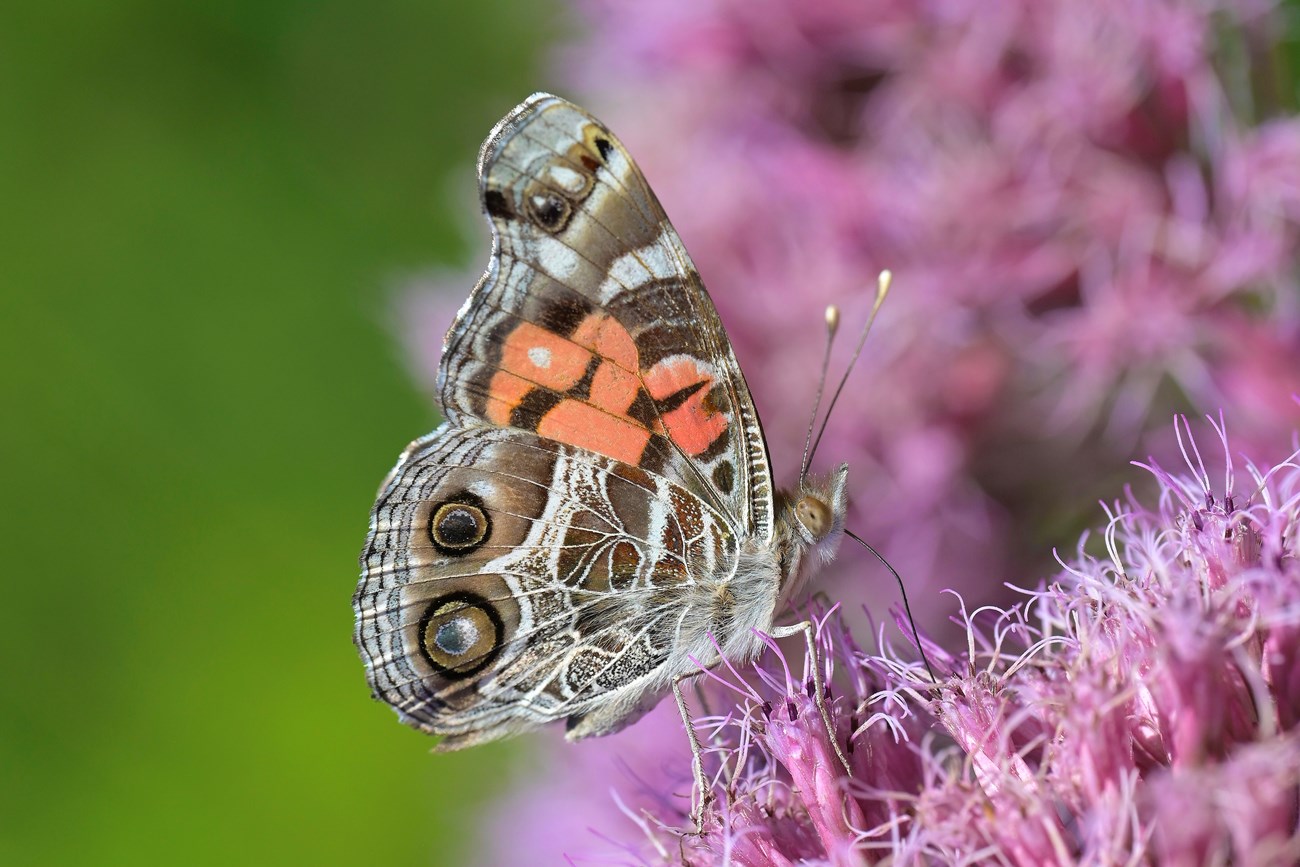
Image credit: NPS / Grace Kowalski
Finding Our Passion
Along with partner organizations, the National Park Service operates the Scientists in Parks internship program to give college students, recent graduates, or early-career professionals the chance to participate in scientific research. It fosters opportunities for emerging scientists to enhance their skills in tasks like data collection, science communication, and field surveys. This unique internship program also exposes young professionals to scientific career opportunities in national parks.
In spring 2023, we were finishing our undergraduate degrees and looking for jobs. I (Kowalski) was seeking an opportunity to develop new research skills after working on ecosystem management and native seed collection as an undergraduate. My previous work fueled my determination to learn more about how land management practices can support the diversity and health of ecological communities. When I came across the job posting for a Scientists in Parks internship to study pollinators, I was excited. I thought it would provide me with the opportunity to draw on knowledge I had already developed and to learn new skills.
I felt inspired by the potential of being a part of pollinator research in national parks and being surrounded by other women in this field of study.
I (Crawford) was searching for pollinator ecology graduate programs after finding my passion for bees as an undergrad. But I struggled to find a laboratory that was a good fit. While exploring one lab website, I found a job posting for a Scientists in Parks internship related to pollinators that prioritized diversity in ecology. I felt inspired by the potential of being a part of pollinator research in national parks and being surrounded by other women in this field of study.
Laying the Groundwork
One long-term goal in inventorying pollinators at Minute Man National Historical Park in Massachusetts is to understand which mowing practices may promote the health and abundance of these animals. The specific effects of mowing depend on which pollinators are present, because different pollinators can have different nesting behavior, habitat, or breeding times. Understanding the types of pollinators that live in the park is thus crucial to determining when to mow or what mowing methods would be most beneficial. The summer 2023 field season was a pilot year for this work, in which I (Kowalski) helped establish a survey protocol, tested survey sites, and got familiar with the park’s most common pollinators. The project continues in 2024 and 2025, using the data park staff and I collected to help determine the best mowing regime.
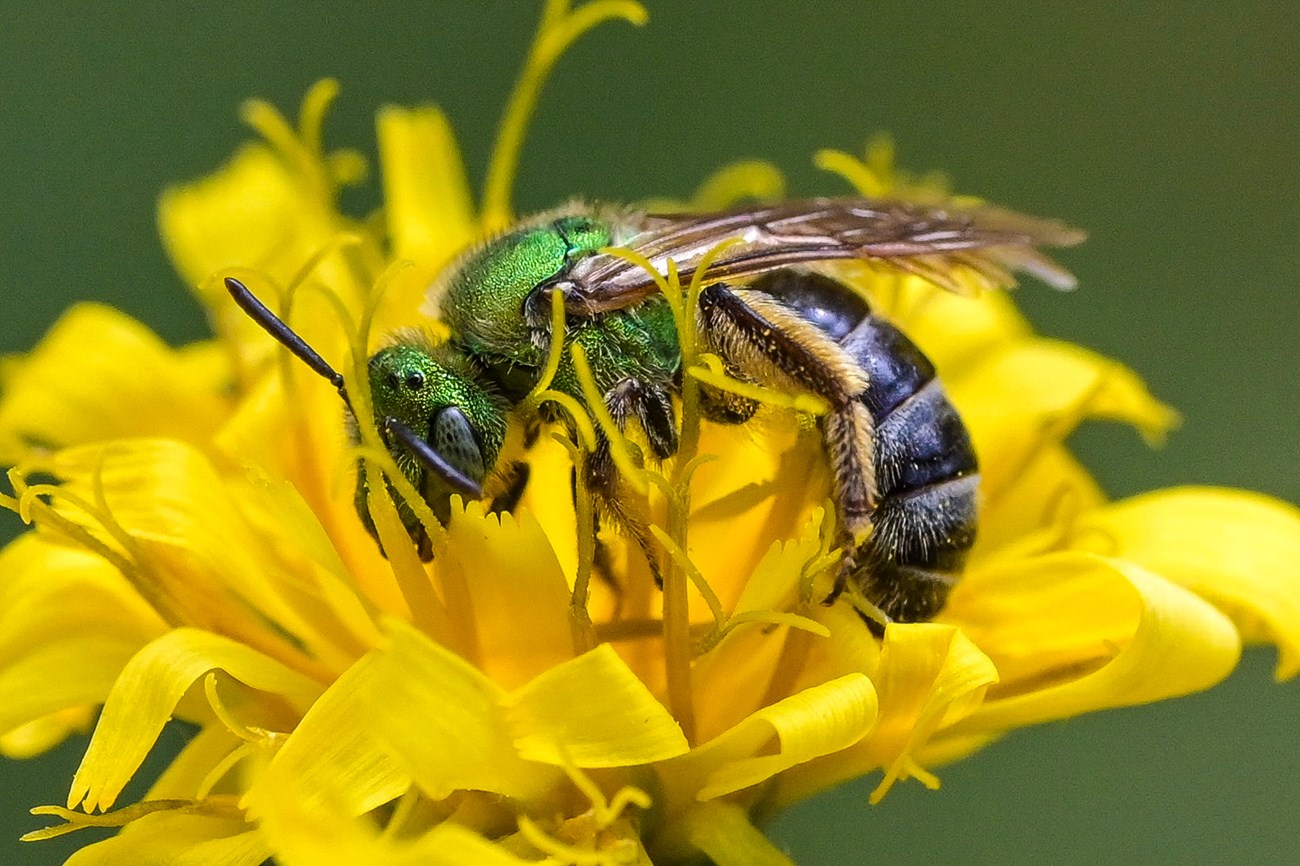
Image credit: NPS / Grace Kowalski
Uncertainty about drivers of pollinator abundance exists in western parks too. There isn’t any consensus in the scientific community on whether domestic grazing is harmful to pollinator communities. But by examining the relationship between pollinators and permitted livestock grazing at Dinosaur National Monument, on the Colorado-Utah border, my (Crawford’s) research helped provide some of these much-needed data. Work in the monument is especially critical because we know species of concern, like the western bumblebee and the monarch butterfly, have existed there historically. “There has never been such a widespread inventory at the monument,” said Emily Spencer, the monument’s natural resource specialist. “The park hosts areas of high priority pollinator habitat, and it is important to have an understanding of what pollinators are present when considering planning actions and management decisions.”
Expanding Experience at Minute Man
In summer 2023, I (Kowalski) surveyed four sites throughout Minute Man weekly. During each survey, I captured live native and non-native pollinators, took photos of specimens for accurate species identification, and recorded their plant hosts. I discovered, for example, a total of nine golden northern bumble bees in two sites at Minute Man. This species has declined by as much as 50 percent since the 1950s. If this continues, researchers think it will be extinct in 70 to 80 years.
My work is helping researchers determine if the non-lethal sampling protocol is an effective way to accurately identify species like these.
Monitoring the golden northern bumble bee population at Minute Man assists scientists in tracking these trends and developing strategies—like limiting habitat disturbance—to help the population recover. My work is helping researchers determine if the non-lethal sampling protocol is an effective way to accurately identify species like these.
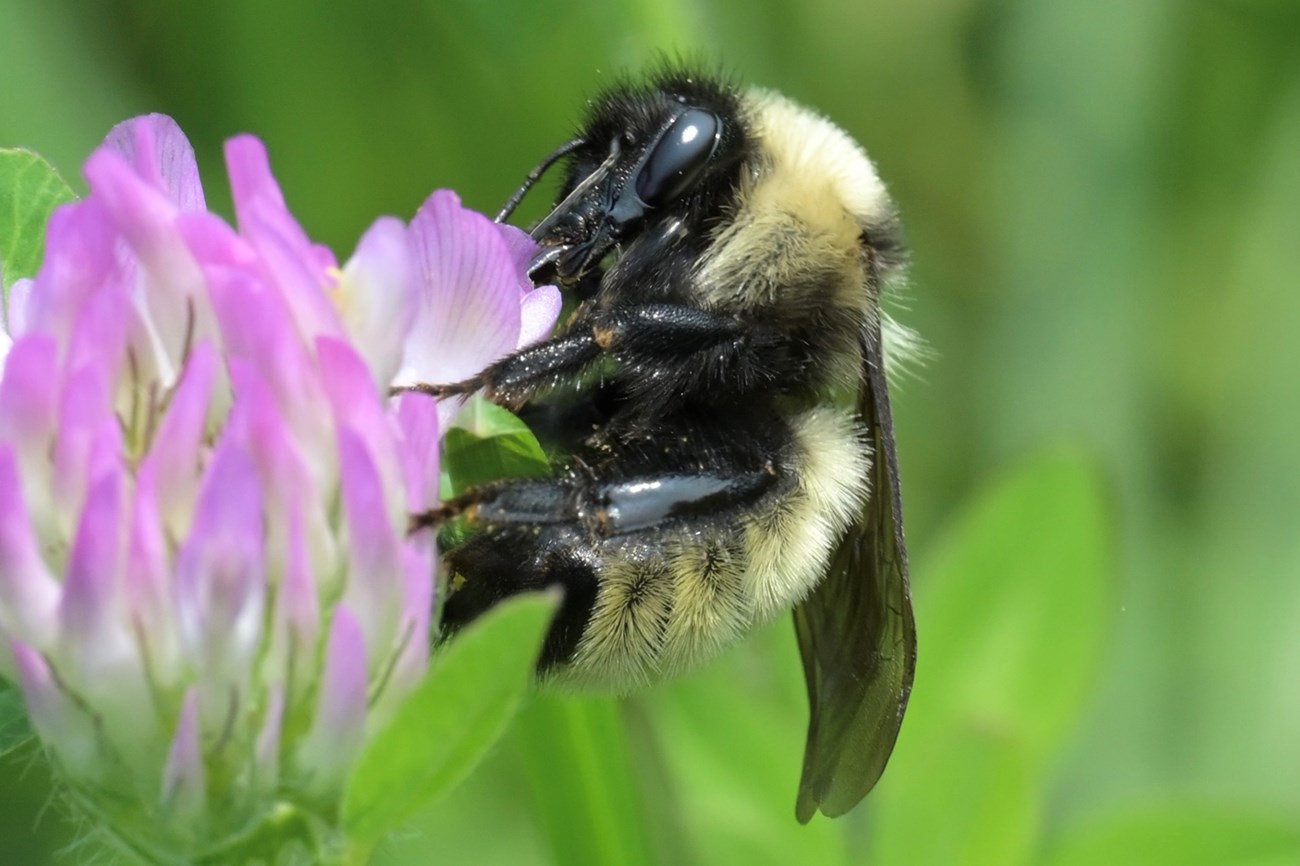
Image credit: NPS / Grace Kowalski
I also developed pollinator field guides using the photos I took, which will help park staff train other employees on species identification. And I assisted natural resources staff with habitat restoration projects like monitoring and removing invasive plants, surveying amphibians and reptiles, and measuring water quality. These activities expanded the breadth of my work experience and my understanding of ecology. By working closely with female scientists, I got to learn about their careers and how they got involved in the positions they hold today. This gave me insight and inspiration into what my future career could look like.

Growing in Science at Dinosaur
The inventory at Dinosaur National Monument aligned closely with my (Crawford's) interest in the ecological impacts of disturbance. I was excited to develop a project that would benefit pollinators and allow me to grow as a data collector and science communicator. Throughout summer 2023, I tested survey protocols, identified potential study sites, and recorded pollinators for field guides and to establish baseline data. I also conducted a comprehensive internal review of current research on the effects of domestic grazing on pollinator communities.
I learned how to balance the needs of multiple stakeholders like ranchers with the need for scientific understanding.
In writing a proposal for this project, I learned how to balance the needs of multiple stakeholders like ranchers with the need for scientific understanding. That skill will serve me well when I work on interdisciplinary projects. Learning more advanced ecological concepts related to pollination and disturbance further fueled my passion for doing research in these subject areas.
As the summer started to come to an end, I switched gears and assisted the Southwest Monarch Study, a large-scale citizen science project, in and around Dinosaur National Monument. Our goal was to understand the dynamics of the monarch population west of the Rocky Mountains, in the Uinta Basin. Understanding monarch butterflies’ migration routes can provide insight into what challenges they face during their journeys and how scientists can alleviate those challenges. For example, land managers could plant monarch food plants along the migration route to heighten the butterflies’ chances of survival.

Image credit: NPS / Nina Crawford
Our data collection focused on locations with abundant and diverse flowers, water, and trees. We used nets to capture butterflies and recorded their location, condition, sex, and behavior. We then carefully applied adhesive tags with unique identification numbers to their wings. We also swabbed their thorax—the midsection between the head and abdomen—to detect the Ophryocystis elektroscirrha parasite, which can greatly weaken a butterfly and impair its ability to reproduce. Finally, we released them, hoping they would be recaptured by other scientists or citizen science volunteers. When people report tagged butterflies to the study, scientists can draw a migration path for them, which is crucial for understanding their overwintering sites.
Making a Difference
I (Kowalski) learned about pollinator research for the first time through this experience, and it inspired me to continue working on research projects that address environmental challenges and promote conservation. In summer 2024, I’ll be working for Colorado State University on a project focused on monitoring and assessing the health and use of riparian and wetland resources on public lands throughout Colorado and Wyoming. I’m excited to continue my focus on researching and maintaining the health and stability of natural resources.
The time I (Crawford) spent as a Scientist in Parks intern and assisting the Southwest Monarch Study inspired me to continue working on pollinator inventory projects in a PhD program at the University of Wyoming. Starting this summer, I’ll be working on park pollinator data requests in the Northern Great Plains Network that examine the impact of disturbance. My experience in the Scientists in Parks program not only connected me with this project, it gave me the confidence to pursue a graduate degree. It fueled my passion for pollinator research and confirmed that I’m capable of making a difference in this field of study.
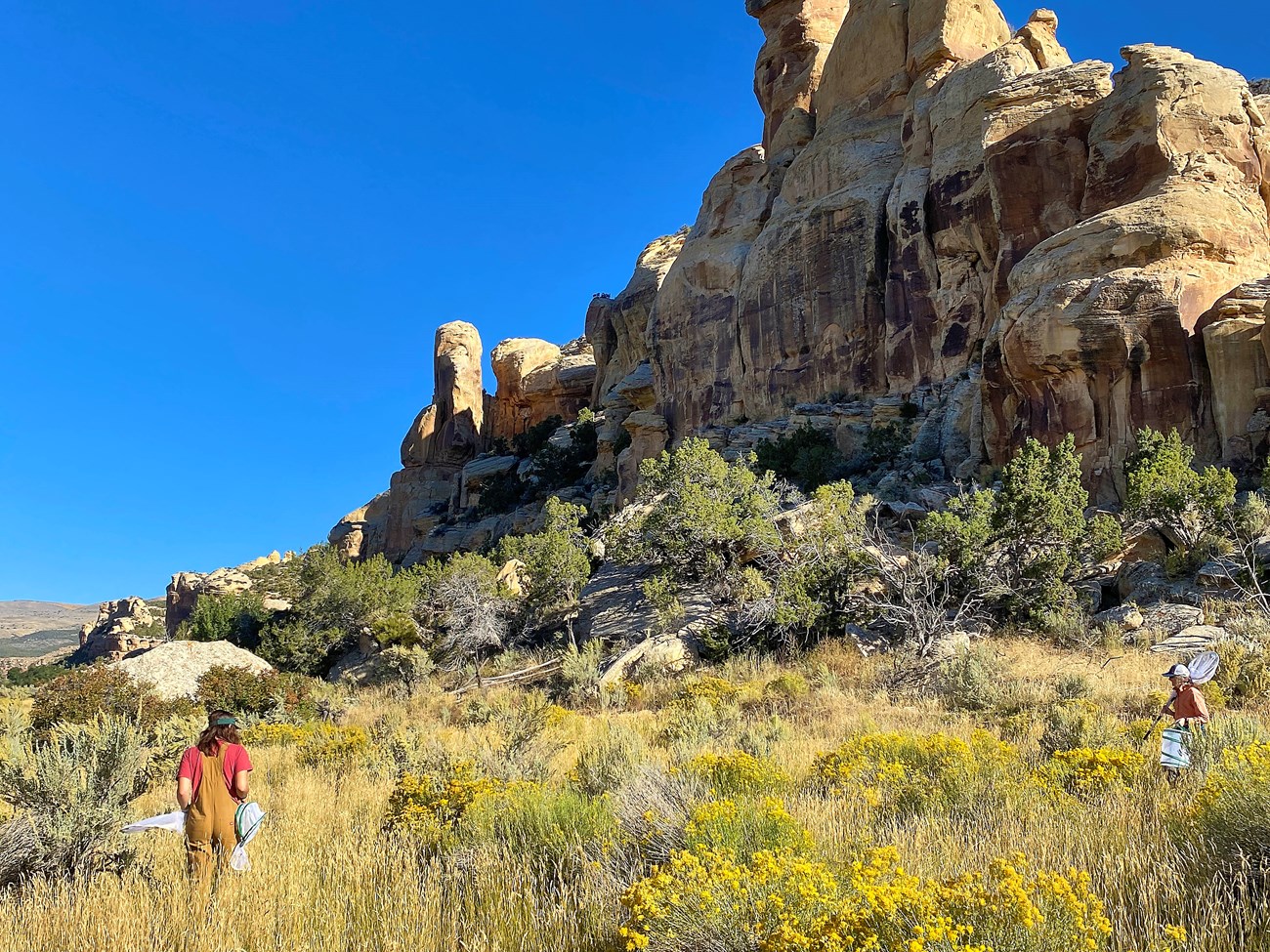
Image credit: NPS / Nina Crawford
As women in science, it was inspiring to enter the National Park Service and be surrounded by other accomplished women. Being mentored by women who held positions of importance allowed us to feel represented in the scientific field and visualize ourselves in similar careers. Through connecting with park visitors and citizen scientists, we were able to pay it forward, mentoring young women ourselves to bolster a scientific community where women have a seat at the table.
This rewarding experience gave us a valuable, career-advancing opportunity to help preserve the intricate plant-pollinator networks.
Pollinators directly contribute to plant reproduction and help maintain the diversity and abundance of plant communities. But without knowing more about their pollinators, parks can do little to preserve them. That’s why inventories are so important. Our work through the Scientists in Parks program helped Dinosaur National Monument and Minute Man National Historical Park determine which methods to use in their 2024 pollinator inventories. This rewarding experience gave us a valuable, career-advancing opportunity to help preserve the intricate plant-pollinator networks on which these beloved park landscapes depend.

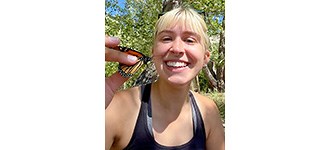
Tags
- dinosaur national monument
- minute man national historical park
- bees
- butterflies
- monarch butterflies
- inventories
- scientists in parks
- grace kowalski
- nina crawford
- pollinators
- inventory
- young scientist
- perspectives
- ps v38 n1
- park science magazine
- park science journal
- inventory and monitoring division
- species inventory
- women in science
